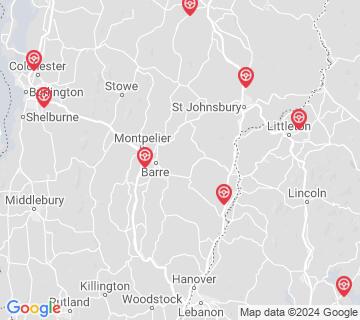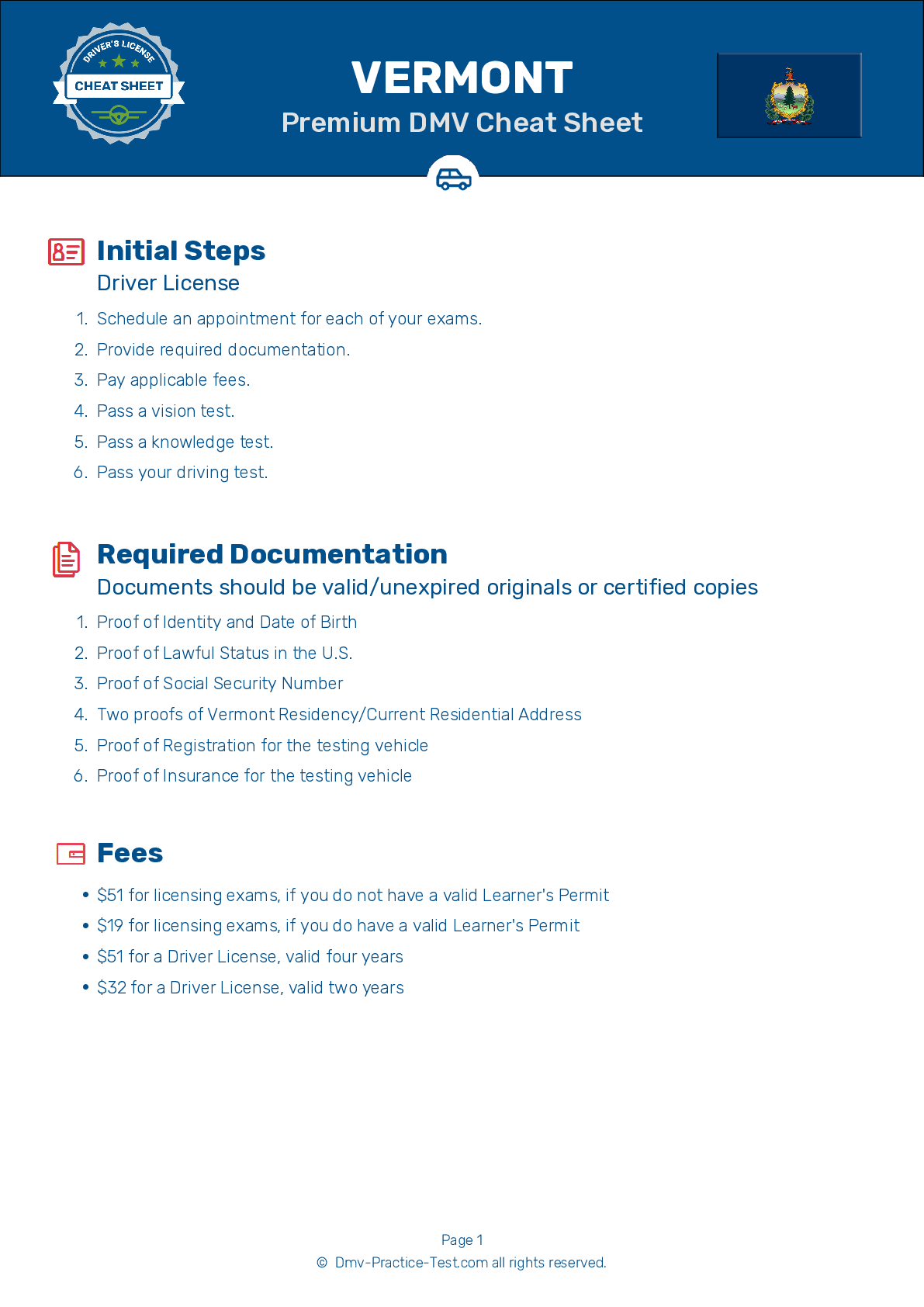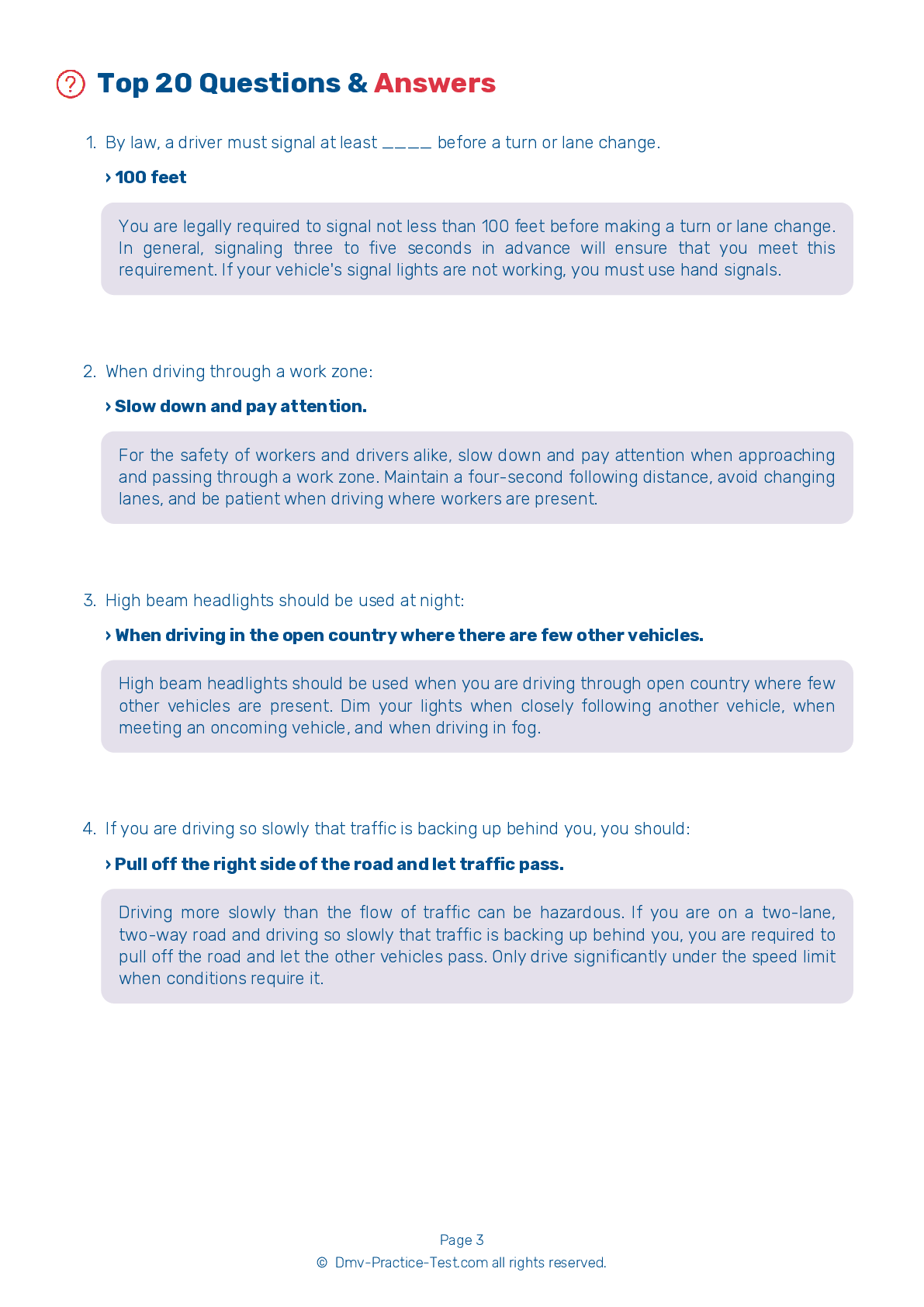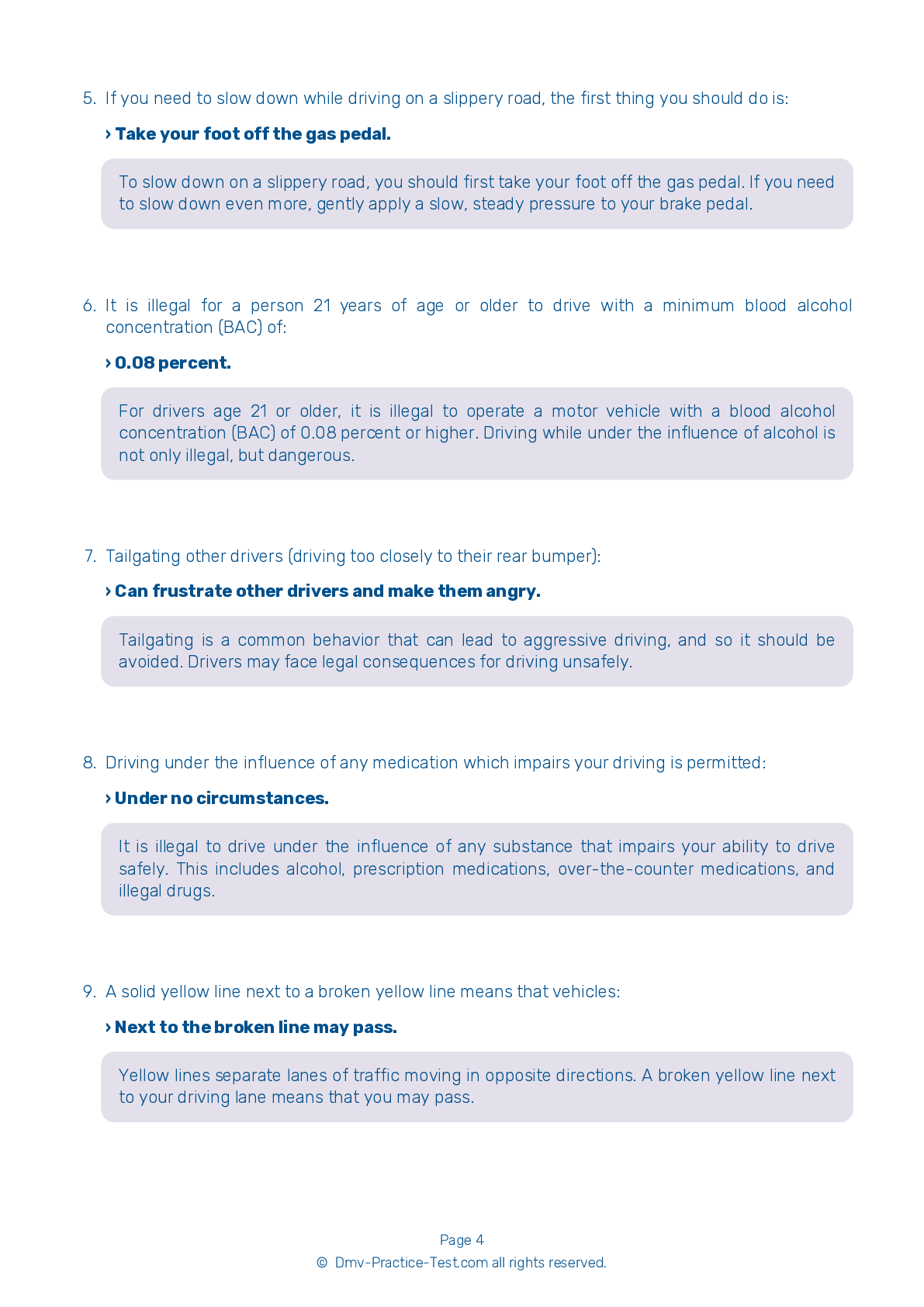FREE Vermont DMV Practice Test #1 Page 2 of 3
The Vermont DMV practise examinations have been updated for January 2025. It includes questions based on the Vermont Driver Handbook's most significant traffic signals and legislation for 2025. Use actual questions that are very similar (often identical!) to the DMV driving permit test and driver's licence exam to study for the DMV driving permit test and driver's licence exam.
On the practise exam, each question gets a tip and explanation to help you remember the concepts. The written component of the official Vermont DMV test will include questions about traffic rules, traffic signs, and driving statutes, as well as knowledge from the Driver Handbook.
To obtain a passing grade, you must correctly answer 16 of the 20 questions. Use the practise exam provided by the Vermont Department of Motor Vehicles to help you prepare for your instruction permit or driver's licence.
The DMV exam is available in several languages.
Using any kind of testing assistance will result in an automatic fail, and the DMV may take additional action against your driver's licence, so stay away from it.
7 . Which of the following statements is not true?
The law requires all occupants of a motor vehicle to be restrained with a safety belt or a federally-approved child restraint system.
8 . When you see this sign, it means:
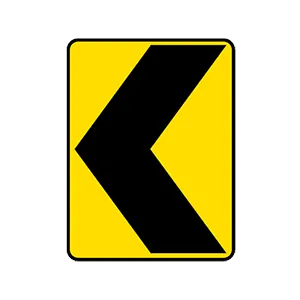
Chevron signs like this indicate that the road curves sharply in the direction indicated by the chevron (in this case, to the left). There may be several chevron signs placed throughout a curve.
9 . Your vehicle's stopping distance increases when stopping:
Stopping distances increase on wet or icy roads. Stopping distances also increase on road surfaces covered in loose gravel or stones.
10 . A right turn at a solid red traffic light is allowed:
Unless posted otherwise, a right turn on a red traffic light is generally allowed. Before turning, you must come to a complete stop before the stop line or crosswalk. Yield the right-of-way to other vehicles and pedestrians before making the turn.
11 . This road sign means:
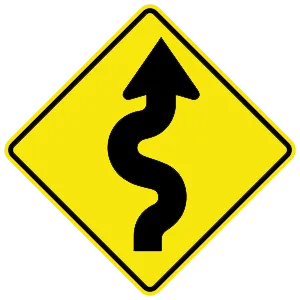
This sign indicates that the road ahead winds with a series of turns or curves.
12 . This sign means:
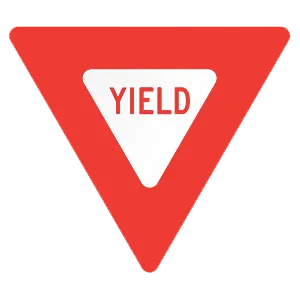
Decrease your speed as you approach an intersection with a yield sign. Prepare to stop and yield the right-of-way to vehicles and pedestrians in the intersection or crossroad. You must come to a full stop at a yield sign if traffic conditions require it.
13 . To check your blind spot before changing lanes:
To check your blind spot before changing lanes, you should look over your shoulder in the direction that you plan to move.
Search the best driving school in your neighbourhood
2025 Vermont | Frequently Asked Questions
1. Not checking mirrors and blind spots before changing lanes or turning.
2. Speeding or driving too slowly for the conditions or posted speed limit.
3. Not coming to a complete stop at stop signs or red lights.
4. Incorrect signalling or not signalling at all.
5. Poor parking, especially parallel parking.
Remember, practice makes perfect, so take time to hone your skills.
